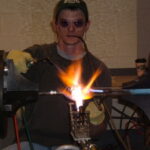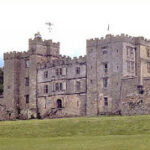Boyle’s Law
(Relationship Between Volume and Pressure)
Robert Boyle was a famous chemist born in 1627 at Lismore Castle, Ireland. In his early years, he was tutored at home, and later went into the renowned Oxford University. His famous scientific paper that was published include New Experiments Physico-Mechanicall, Touching the Spring of the Air and Its Effects (1660), Sceptical Chymist (1661), and etc. He is especially famous for developing the Boyle’s Law.
Boyle’s Law: In 1662, Robert Boyle stated that the volume of a given amount of gas, at a constant temperature, varies inversely with the applied pressure. This means, as external pressure on a gas increases, the volume of the gas decreases by the same factor. Therefore, it is correct to say the volume and pressure of a certain quantity of a gas are inversely proportional.
Pressure: P Volume: V Constant: K
Pressure = Constant/Volume
or
Volume = Constant/Pressure
or
Pressure x Volume = Constant àPV=K
Equation : P1 x V1 = P2 x V2
Sample Questions
#1 A sample of nitrogen gas at 25°C is compressed from 250 cm3 to 0.180 cm3. Its pressure is now 2.50kPa. What was the original pressure of the nitrogen?
Given:
Initial volume V1 = 250 cm3
Final volume V2 = 0.180 cm3
Initial pressure P2 = 2.50 kPa
Required:
the original pressure
P1 = ?
Solution:
P1V1 = P2V2
P1 = P2V2 / V1
P1 = 2.50kPa x 0.180 cm3/250 cm3
P1 = 0.0018 kPa
P1 = 1.8 x 10-3 kPa
Statement:
Therefore, the original pressure of nitrogen gas is 1.8 x 10-3 kPa
#2 The air in the bike has a pressure of 100kPa and 20L of air, after 2 pumps, the air in the tire went form 20L to 40L, what is the pressure now?
Given:Unknown:Equation: Solutions:
Pi=100kPa Pf=? PiVi=PfVf Let Pf be X.
Vi=20L 100×20=4xXFi=40L 100kPa20L=?4L 2000=4X
2000/4=4X/4
500=X
X=500 kPa
Statement:
Therefore, the air pressure in the tire now after the pump is 500 kPa.






